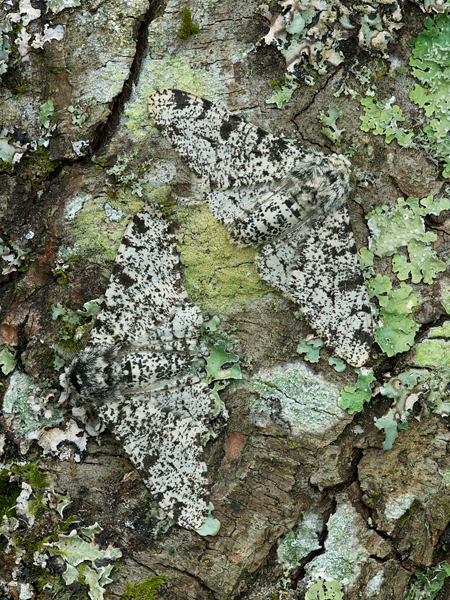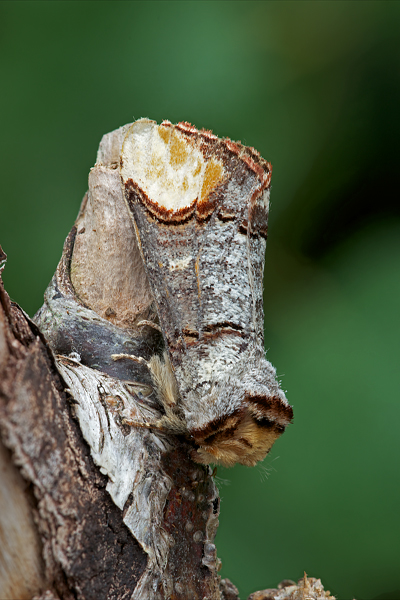July 2013
Nikon D3X + 200mm macro, fill-flash, ISO 200 tripod.
July has certainly been a transformation weather-wise with many more moths on the wing. This monthly blog is a bit late as I’ve been doing a workshop in the French Pyrenees. In addition to the superb scenery, the mountains had plenty of interesting subject material despite the recent devastation as a result of the floods. I will post a blog about this fairly soon!
White Prominent Leucodonta bicoloria
This is with doubt one of the most attractive prominent’s in Ireland. The moth is restricted to County Kerry. Adults were only rediscovered in 2008 after an absence of 70 years. Despite many attempts to rediscover it many lepidopterists were of the opinion that it was extinct in Ireland. In the late 19th century, it was recorded locality in Staffordshire, and in Devon.
In Ireland adults occur in mixed woodland and fly in early June until late July. The larvae feed principally on birch.

Peppered Moth Biston betularia
Nikon D800 + 200mm macro, fill-flash, ISO 100 tripod.
Peppered Moth Biston betularia
This species is related to the Oak Beauty B. strataria but is more commonly encountered across a wide variety of habitats including gardens. Adults are sometimes seen resting by day on stone walls and tree trunks, where it can be incredibly cryptic among the lichens.
There is a melanic form carbonaria, which has been featured, widely in genetic studies. It illustrates the phenomenon of industrial melanism, where dark individuals became the dominant form in some cities and parts of northern England. Nowadays, this melanic form carbonaria has declined rapidly from many of its former haunts.
The larvae are frequently encountered from mid-summer onwards on a variety of trees including, willow, birch and oak.

Buf-tip Phalera bucephala
Nikon D800 + 200mm macro, fill-flash, ISO 200 tripod.
Buff-tip Phalera bucephala
The Adult moths are easily recognised by the silvery-grey colour and the large buff-coloured patch at the apex of the forewings. The thorax is a dark buff colour. When at rest the adult holds its wings tightly along its body giving a very convincing impression of a broken silver birch twig.
The moth is widespread and commonly encountered in a wide variety of habitats including gardens. The conspicuous yellow-and-black caterpillars live gregariously and feed on a number of different deciduous trees, occasionally defoliating entire branches.

